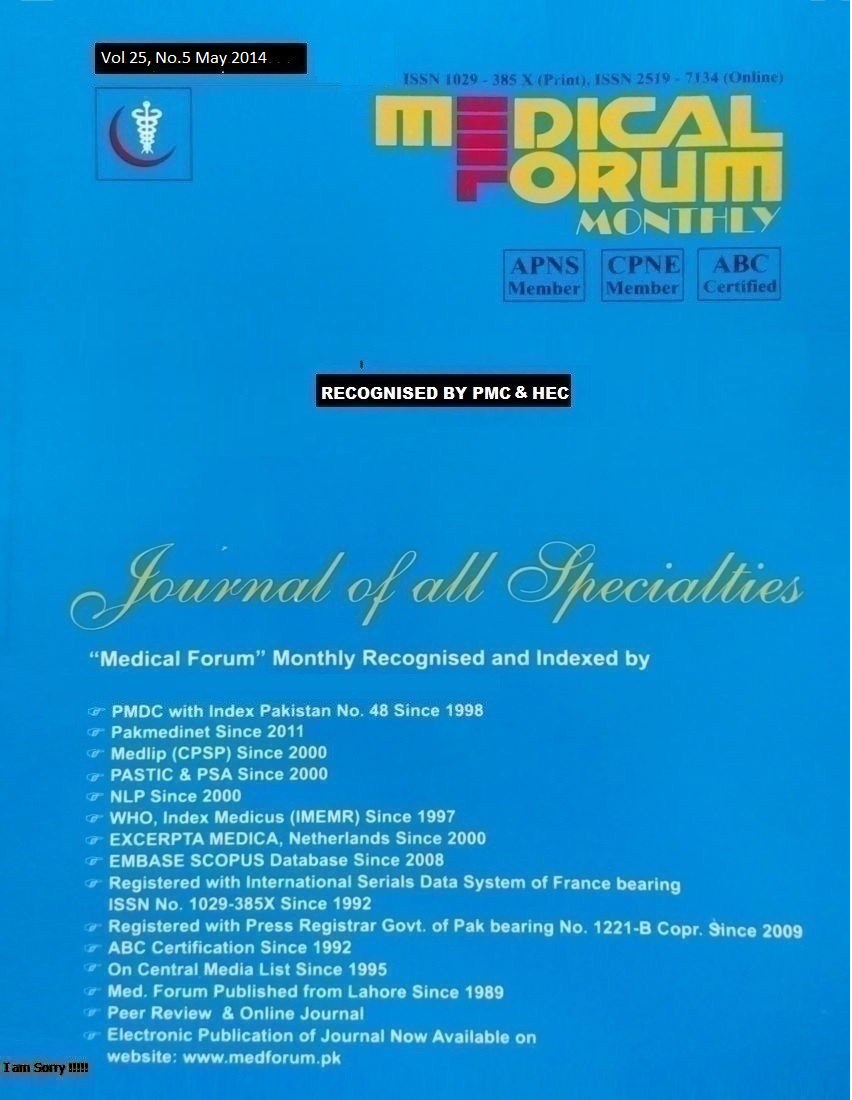
7. Outcome of Early Management of Club Foot by Ponseti Technique
1. Muhammad Khan Pahore 2. Muhammad Ayub Laghari 3. Asim Niaz 4. Sikandar Ali Bhand 5. Muhammad Saeed
1. Asstt.Prof.of Orthopedic Surgery and Traumatology, Liaquat University Hospital, Jamshoro 2. Prof.of Orthopedic
Surgery and Traumatology, Liaquat University Hospital, Jamshoro 3. Dept. of orthopedic surgery, Isra university
Hospital Hyderaad 4. Asstt. Prof. of Paedriatic, Liaquat University Hospital, Hyderabad 5. Liaquat University
Hospital Hyderabad
ABSTRACT
Objective: The Objective of this study is to assess the anatomical correction, cosmetic and functional outcome of the Ponseti method in idiopathic congenital Talipes Equino Varus (CTEV).
Study Design: Experimental and case series study
Place and Duration of Study: The study was carried out in the Department of Orthopaedic Surgery and Traumatology (DOST) Liaquat University of Medical & Health Sciences Jamshoro for a period of two years from 21-01-2009 to 20-01-2011.
Materials and Methods: This study was contains 50 cases of congenital talipes equino varus "CTEV". In this study all the case were selected with age of one year from the birth with congenital "talipes Equino Varus". All the cases with Acquired "Talipes Equino Varus", atypical foot, "talipes Equino Varus" with Arthrogryposis Multiplex Congenital, "talipes Equino Varus" previously treated by method other than ponseti technique were excluded from the study.
 Results: Total 50 cases of congenital Telipase Equino Varus (CTEV) having 77 feet were analyzed in this study with (male female ratio 1:7). Out of 50 cases, 27 (54.0%, n = 50) had bilateral (54 feet) deformities and 23 (46.0%, n = 50) cases were unilateral deformities. Severity was assessed according to Pirani Scoring system. 48 (62.0%) had severe foot deformity while 29(37.60%, n = 77) patients had moderate foot deformity. Out of 77 feet, rocker bottom foot deformity developed in 03 (3.8%) feet, increased stiffness of ligaments and joints occurred in 1(1.2%, n =77) foot while vascular complications like skin ulceration and necrosis was observed in 1(1.2%, n =77) feet. At the end of 2 to 3 years follow-up period, in 72 (94.0%, n = 77) patients congenital clubfoot deformities were corrected successfully by using Ponseti method while 05 (6.0%, n = 77) patients were not fully corrected due to other complications.
Results: Total 50 cases of congenital Telipase Equino Varus (CTEV) having 77 feet were analyzed in this study with (male female ratio 1:7). Out of 50 cases, 27 (54.0%, n = 50) had bilateral (54 feet) deformities and 23 (46.0%, n = 50) cases were unilateral deformities. Severity was assessed according to Pirani Scoring system. 48 (62.0%) had severe foot deformity while 29(37.60%, n = 77) patients had moderate foot deformity. Out of 77 feet, rocker bottom foot deformity developed in 03 (3.8%) feet, increased stiffness of ligaments and joints occurred in 1(1.2%, n =77) foot while vascular complications like skin ulceration and necrosis was observed in 1(1.2%, n =77) feet. At the end of 2 to 3 years follow-up period, in 72 (94.0%, n = 77) patients congenital clubfoot deformities were corrected successfully by using Ponseti method while 05 (6.0%, n = 77) patients were not fully corrected due to other complications.
Conclusion: The Ponseti method is a fast, safe and effective treatment for congenital idiopathic clubfoot and radically decreases the need for extensive corrective surgery.
Key Words: Ponseti method, idiopathic congenital Club feet, 12 months age.
